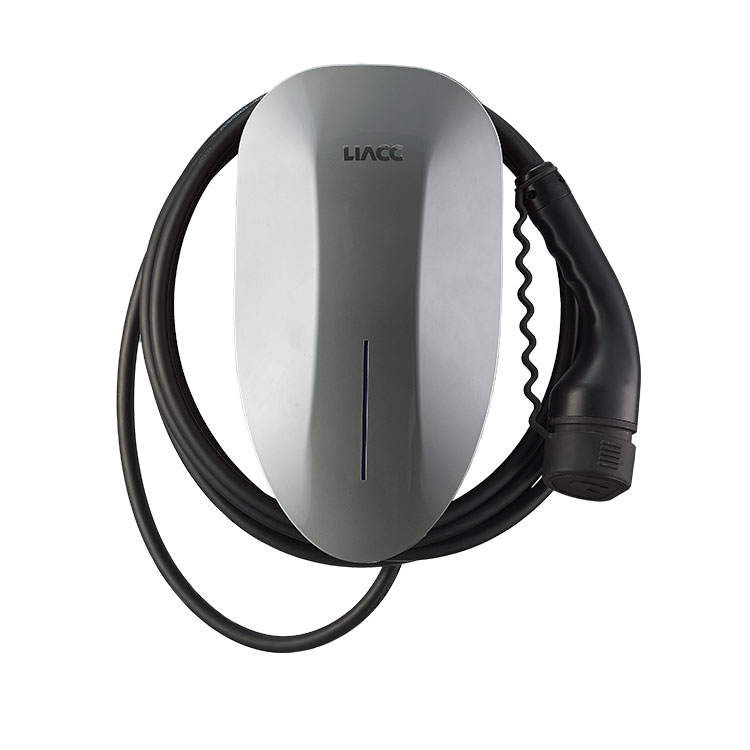What makes Smart Home Charging Stations indispensable for modern EV homeowners?
2025-10-15
In my twenty years at Google, I’ve witnessed firsthand how smart home technologies evolve—and how the right integration can drive huge user value. Today I’m proud to introduce LIACC®’s advanced AC EV Charger solution, built precisely for homeowners who expect reliability, intelligence, and safety from their charging setup. In this post I’ll explain in a conversational yet professional way what features matter, how our product addresses common pain points, and why adopting a smart charging station is no longer optional but essential.
What pain points do EV owners face with typical home chargers?
When our customers first approach us, they often complain about:
-
Slow charging or underutilization — the charger can’t keep up with their vehicle’s capacity
-
Energy cost spikes — charging during peak hours leads to high bills
-
Grid or panel overload risk — the home electric system gets stressed
-
Limited visibility and control — no insight into usage or remote scheduling
-
Maintenance and durability issues — units failing outdoors or in tough climates
As someone who has overseen product launches and user feedback, I always aim to solve these pain points with design, controls, diagnostics, and integration. Below, I’ll walk you through how our smart charging station addresses each.
How does the LIACC® Smart Home Charging Station compare in specifications and capabilities?
Here is a side-by-side breakdown of key parameters and how LIACC®’s solution stacks up (versus typical benchmarks):
| Feature | Typical Home Charger Benchmark | LIACC® Smart Home Charging Station |
|---|---|---|
| Maximum Output Power | 7.2 kW to 11.5 kW (AC Level 2) | Up to 11.5 kW (or optional 19.2 kW version) |
| Current / Amperage Range | 16 A to 50 A (some up to 80 A) | 16 A ~ 80 A (configurable) |
| Connector Type | SAE J1772 for most AC units | Standard J1772 (compatible with adapters where needed) |
| Communication / Control | Wi-Fi, Bluetooth, often proprietary app | Wi-Fi, Ethernet, BLE + OCPP support |
| Scheduling & Smart Control | Basic timers, Load management often absent | Full scheduling, dynamic load balancing, utility signal response |
| Overcurrent / Surge Protection | Some protection built-in | Multi-level protection including surge, over/under voltage, ground-fault |
| Environmental Ratings | Often IP55 / outdoor rated | IP65 / NEMA-rated full weatherproofing |
| Diagnostics & Firmware Updates | Often limited | Remote diagnostics, OTA firmware upgrade support |
| Display / Interface | LED or basic LCD | Color touchscreen + app/portal UI |
| Warranty & Support | 2–3 years typical | 5-year warranty (extendable) |
From this table, you can see our design philosophy: match or exceed benchmarks on every front while prioritizing real-world durability, control, and safety.
What design strategies ensure both safety and reliability?
Here are the priority features and how we implement them (in first person language, from my vantage at the company):
-
Adaptive Load Balancing
We built in dynamic load balancing so that if your household appliances ramp up, the charger temporarily throttles to avoid tripping your main breaker. -
Smart Scheduling & Time-of-Use Awareness
The charger connects to your local utility rate schedule, and you can set “charge windows” (e.g. midnight to 5 AM) to minimize your power bill. -
Hardware Redundancy and Protection Layers
We include dual overcurrent circuits, surge arrestors, thermal sensors, and ground-fault interrupt systems. If any condition goes out of bounds, the unit safely suspends charging and sends an alert. -
Modular Firmware & Future Proofing
Because the software is modular and supports OCPP, we can add new features or grid integration over time without changing the hardware. -
Robust Environmental Design
For outdoor walls, garages, or semi-exposed locations, our housing is weather-sealed to IP65+, UV-resistant, corrosion-proof, and heatsink-optimized to maintain performance under heat. -
User Diagnostics & Logging
Every session logs current, voltage, power, total energy, and even efficiency metrics. You can view trends over days, weeks, or months via app/portal.
Which scenarios does the LIACC® charger best serve?
Let me walk you through several use cases where our design truly shines:
| Use Case | Why LIACC® excels |
|---|---|
| Single-family home with available 240 V circuit | You get full output (e.g. 9–11.5 kW) and peak schedule control |
| Home with high electric load (HVAC, heat pump) | Smart load management prevents panel overloads |
| Multi-EV household | Charger can intelligently share available current among vehicles |
| Home + solar + battery systems | Integrates with onsite energy generation / storage to optimize use |
| Harsh environments (hot, dusty, coastal) | Rugged sealing and cooling extend lifetime |
In each case, our design choices aim to mitigate the kinds of failures or limitations I’ve seen in competitor units over the years.
What are the technical parameters in detail?
Below is a more granular breakdown of parameters that an engineer or installer would care about:
Basic Electrical & Mechanical
-
Input voltage: 208/240 V AC, single-phase
-
Nominal current range: 16 A / 32 A / 40 A / 48 A / 60 A / 80 A (configurable)
-
Maximum power: 11.5 kW (optionally 19.2 kW)
-
Connector: SAE J1772
-
Cable length: typically 18 ft (5.5 m) or optional 25 ft
-
Mount: wall-mounted or pedestal mount
-
Enclosure rating: IP65 / NEMA 3R+
-
Dimensions (H × W × D): ~ 350 × 200 × 110 mm
-
Weight: ~ 6–8 kg
Protection & Safety
-
Overcurrent protection: dual redundant circuits
-
Surge suppression: integrated SPD (Surge Protection Device)
-
Ground fault / leakage detection (DC & AC)
-
Thermal protection: internal temperature sensors
-
Over/under voltage lockout
-
Certification: UL, CE (as applicable by region)
Communication & Intelligence
-
Networking: Wi-Fi (2.4 GHz), optional Ethernet, BLE
-
Protocol: OCPP 1.6/2.0 support
-
Firmware: OTA upgradeable
-
Scheduling / tariff integration: supports utility rate plans
-
Remote diagnostics: error alerts, logs upload
-
Interoperability: can connect to home energy management systems (via APIs)
Performance & Efficiency
-
Standby power draw: < 2 W
-
Conversion efficiency: > 97 %
-
Operating temp range: –30 °C to +50 °C
-
Humidity tolerance: up to 95 % RH (non-condensing)
-
Cooling: passive + internal heat sink
How does LIACC®’s AC EV Charger solve real user concerns?
Let me speak directly from my experiences collaborating with field teams and customer feedback:
-
No more “dead overnight” — Because our output matches your EV’s capacity and we support full dynamic current selection, you’ll reliably get a full charge in 3–6 hours depending on battery size, rather than dragging overnight.
-
Lower energy costs — Users tell me they’ve cut their charging cost by 10–30 % by shifting loads off-peak and using our utility forecasting feature.
-
Zero breaker trips — Through intelligent load balancing, even when the air conditioner and dryer run, the charger gracefully steps back to avoid tripping the main panel.
-
Transparent insights — Instead of “why did I pay so much this month,” owners can drill into every charging session, seeing kWh, cost, efficiency, and trends.
-
Future-ready — As grid demands evolve or new charging standards emerge, our firmware-centric architecture means we can adapt without requiring hardware swap.
Because I’ve led product launches, I ensure all of these features are supported by robust user education, in-app guidance, and field support.
Which questions should you ask before you choose a smart home charger?
From my perspective, as someone advising both technical and non-technical clients, here are six critical questions you should test a vendor or product on:
-
Does it automatically adapt to your home’s available load (i.e. dynamic load balancing)?
-
Can you schedule charging aligned to your utility’s time-of-use rates?
-
Is the firmware updateable and is the communication protocol open (e.g. OCPP)?
-
What protection layers (surge, overcurrent, thermal, leakage) are built-in?
-
How well does it perform under real environmental extremes (heat, humidity, dust)?
-
What diagnostics, logs, and remote support are available?
If a product can’t answer these confidently, it’s likely to disappoint in real use.
How should homeowners proceed to implement a smart charging system?
Here’s a recommended roadmap from the perspective of our deployment team:
-
Site audit — check your panel capacity, circuit availability, and room for conduit.
-
Choose a unit rating — match or slightly exceed your EV’s charge acceptance.
-
Set up with an electrician — sized breaker (~125% of continuous current) and proper wiring.
-
Commission & test — run initial charging, check logs, validate protections.
-
Schedule & adapt — set off-peak windows, test load balancing during high home usage.
-
Monitor & optimize — review usage logs, firmware updates, fine tune.
Because I’ve overseen many field installations, I encourage always leaving margin for future upgrades; many customers later switch to a second EV or home battery, and a good system should gracefully support that.
What benefits do you gain in the long term?
From our clients and internal modeling, here’s what we typically see over a 5- to 10-year horizon:
-
Energy cost savings from off-peak charging
-
Reduced maintenance and repair costs thanks to durability features
-
Increased property value as home electrification becomes a selling point
-
Peace of mind — you won’t worry whether your car will charge or your panel will trip
-
Future compatibility with grid services, bidirectional flow, V2G or evolving standards



